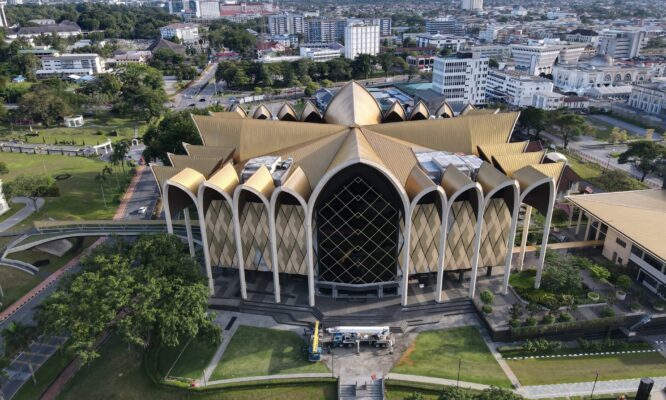Meet Haja Mohideen.
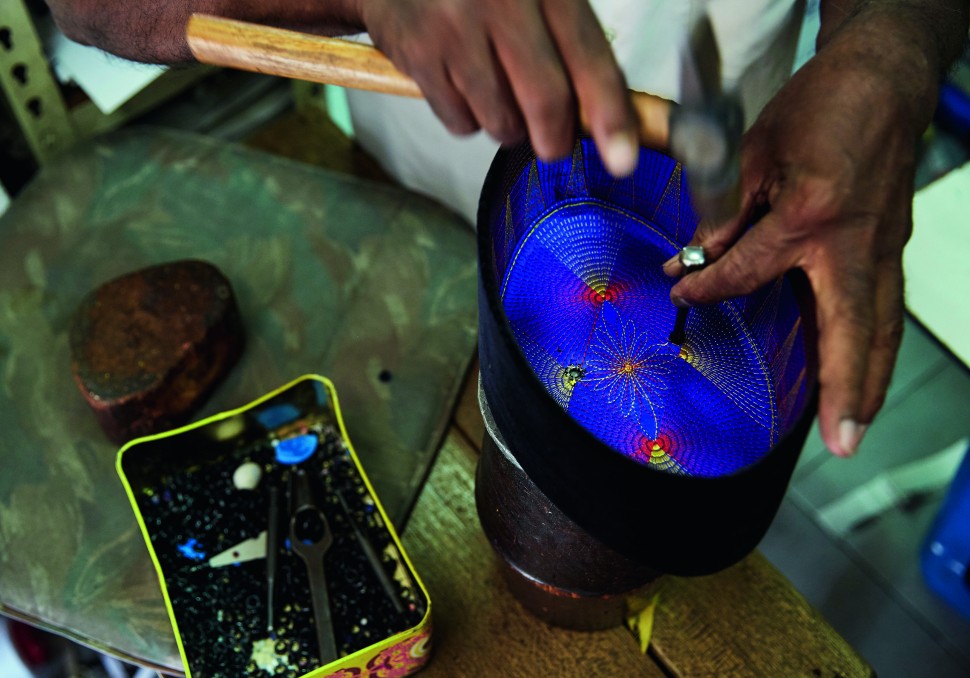
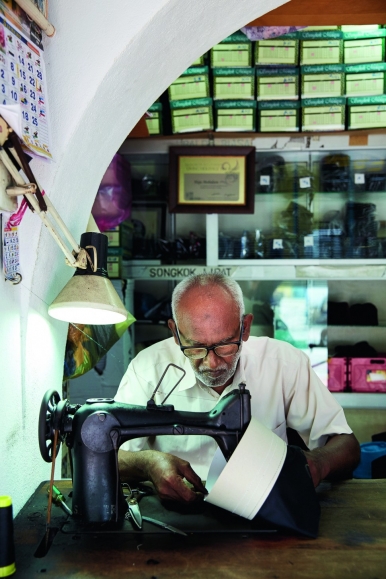
A Muslim man's traditional attire is deemed incomplete without the songkok, a tall headdress commonly sighted in the Malay Archipelago after the introduction of Islam during the early 13th century. Typically worn during ceremonial occasions or during prayers at the mosque, the songkok shows no signs of going out of fashion anytime soon. The same, however, cannot be said of the traditional techniques of making songkok.
One person who is trying to keep the tradition alive is Haja Mohideen Mohd Sharif. The 70-year-old songkok maker operates from a narrow alcove on the side wall of the Nagore Shrine at the entrance of Little India, Penang. Barely protected by blinds that have seen better days, the half-square-metre working space can be cramped and hot on a sunny day, but Haja Mohideen has no intention of moving.
The shop is a precious legacy from his late father, OSM Mohd Shariff Mohideen Rawhter, who started the business and worked at the same premises for 40 years until his death in 1973. He would be proud of his son. One of the most celebrated songkok makers in Malaysia, he was recognised with the prestigious Living Heritage Treasures Awards of Penang in 2017, which ensures an annual cash subsidy of RM2,000 (USD486) every year for the remainder of his life.
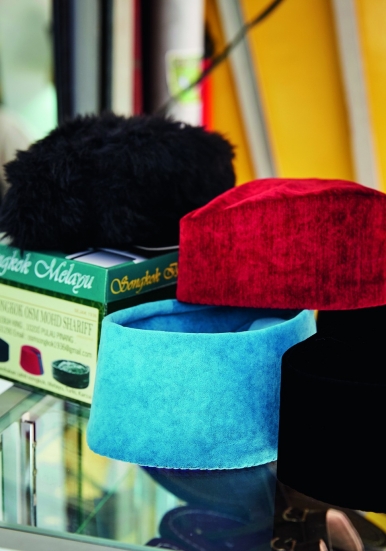
Haja Mohideen’s love affair with the songkok started at the age of 12, when he would help his father at the shop after school. From sewing the base of the songkok – a simple task reserved for novices – he quickly progressed to making a variety of songkok styles, from songkok lipat, songkok karzi and songkok melayu. Despite having the paper qualifications to secure a more stable job, he decided to follow in his father’s footsteps. He was only 24 when he took over the business from his father in 1973.
Surrounded by piles of velvet cloth, oblong boxes and paper cartons, Haja Mohideen explains that the process of making songkok requires both practical skills and artistic flair. The inner frame is created using cardboard or paper from old carton boxes, then cut into an oval shape (tampuk) for the top, and a long rectangular piece of the same material is used to form the rim of the songkok. Finally, the tampuk is joined with the rim; the two must fit like a glove so that the final product looks and feels smooth and seamless. A good songkok should stand steadily on a flat surface before it can fit properly on the wearer’s head.
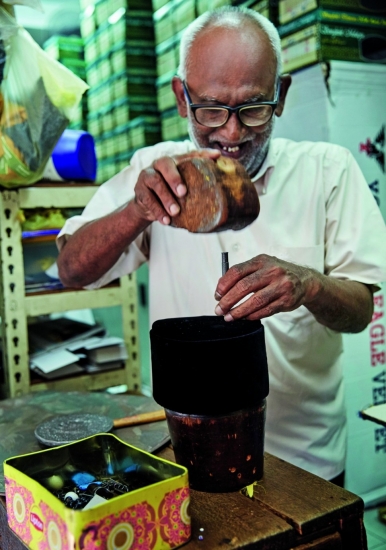
From cutting the velvet cloth to sewing the base, Haja Mohideen does it all – which is no longer common these days, with the dawn of retail giants with the economies of scale to do mass machine production. Despite the long hours and hard work, he tries to charge a reasonable rate for his songkok. Depending on the size and shape, he charges RM20 (USD5) for a child’s songkok, and upwards of RM25 (USD6) for adults.
Despite the widespread availability of commercial songkok, long-time customers – more discerning ones, you might say – prefer the work of bespoke songkok-makers like Haja Mohideen, who can incorporate personal touches. For the wearer’s comfort, he may drill small holes at the top of the songkok to let air in or use satin instead of plastic to line the songkok’s rim to minimise sweating.
Haja Mohideen’s son-in law Abdul Kader Mydin has been helping him for the last four years. He admits that age and a weak eye have slowed him down. He takes almost two hours to churn out a songkok these days, but he is determined to champion this fading art.
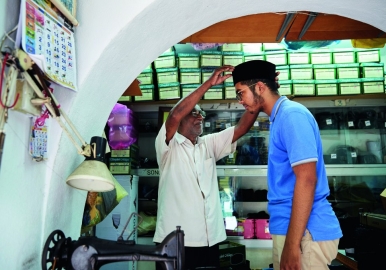
His face lights up when a twenty-something customer drops by to buy a songkok. From their banter, it’s obvious the young man is a regular. “His grandfather brought him here as a kid, and I’ve been making his songkok ever since his first songkok for school. I’ve watched multiple generations of my customers grow up. Some of them are like family. How can I give this up?”
Haja Mohideen Mohd Shariff
Kedai Songkok OSM Mohd Shariff
157 Lebuh King
10200 George Town
Pulau Pinang
Tel: +604–2631290
